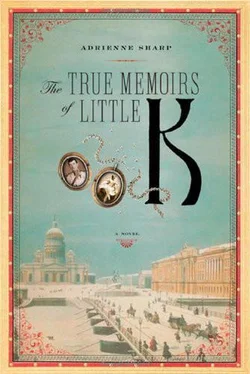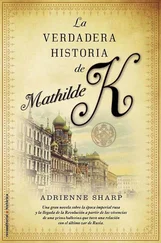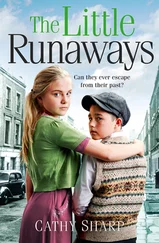Ah, but there was a Tsar. He was at Tsarskoye Selo, playing dominoes. And I thought, Perhaps Niki will not do as well with all this as I had believed .
_______
This day came to be known as Bloody Sunday, and the bleeding from it lasted all that year of 1905, the blood being all the loudly expressed dissatisfactions of the entire country—not only the factory laborers who requested decent hours and housing, but also the citizens angered by the costly war with Japan, the peasants who had survived the famine of the last decade and now claimed a right to the land they tenanted, the intelligenty who demanded civil rights and who, along with a few liberal noblemen, called for a national parliament, a national zemstvo in which they all, not only the tsar, had a voice. It seemed the whole country began holding meetings and coming up with manifestos to send to the tsar and his ministers, and to the Winter Palace were sent sixty thousand petitions, like the cahiers , the letters of grievance, sent by the French people to King Louis XVI in 1789, and all these letters asked the tsar for reform. The petitions for a cabinet of ministers and a Land Assembly of representatives of all the tsar’s subjects came from the tsar’s own ministers; the petitions for the redistribution of land from the squires to the peasants came from, of course, the peasants; and the petition for a Union of Unions in which every worker would belong to an association concerned with political freedom—lawyers, professors, clerks, bookkeepers, teachers, Jews, women, railroad employees, peasants—came from the liberals, the intelligenty . And these petitions were followed by action. More than a hundred thousand ironworkers and electrical workers struck spontaneously later in January, and once again I watched men march over the Troitsky Bridge, ten abreast, and for a few days we had no light. The schools had to be closed in February. In September the printers struck and so for weeks there were no newspapers, rail workers struck and there were no trains and no telegraph. So many of the previous revolutionary troublemakers had already been sent or had fled abroad to avoid arrest that a new cadre of leaders had emerged—the writer Gorky and the nobleman Prince Lvov and others like him who had long sought to help the peasantry and advocated reform. They wrote articles and gave speeches, and soon the agitation in the cities spread to the countryside. In Russia’s provinces, in Tomsk, Simteropol, Tver, and Odessa, the great agricultural swath, the peasants cut down their squires’ forests, took their hay, destroyed whatever machinery they couldn’t load onto their carts, and stole their squires’ crystal and porcelain and paintings and statues. The peasants of one village hacked a piano to bits and divided among themselves its ivory keys. Other manor houses were burned, their libraries and tapestries and grand pianos and oriental carpets turned to ash—and the houses they didn’t burn, they desecrated, squatting to leave piles of excrement on the carpets and floors, smearing the wallpaper with their filthy hands. We were here in your house . The squires fled to the cities to petition the court for help, while in the countryside the skies turned ocher from the fires and the peasants like plowhorses pulled their loaded wooden carts of stolen goods across the fields. In Moscow the students at the university burned portraits of the tsar and hung red flags from the roofs of the buildings. Even in Latvia, in Finland, in Georgia, in my own Poland, there were strikes and barricades and street fighting from the people who had never enjoyed, but had simply endured, Russia’s dominion. Yes, Russia’s old unrest of the 1820s had returned, suddenly, and with a vengeance.
During this terrible year, Niki took Alix, Alexei, and the girls and retreated into the routine of the imperial year—winter at Tsarskoye, spring at Livadia, summer at Peterhof, Poland in autumn for the hunt, back to Tsarskoye for the long Russian winter. But in retreating from his people, he also retreated from me. He had not been seen in the capital since the Feast of the Epiphany. Might he not forget I existed, and as long as Alix’s son remained healthy, forget my son’s existence, as well? For not all hemophiliacs died young. Prince Leopold of England had lived to thirty-one. It was possible my son and I might wait here for thirty years or more before Niki turned his head toward us again. By then Niki and Vova would be strangers! Niki and I would be strangers and I an old woman! Away from the theater, sequestered in this palace and by social position, Vova and I were invisible to the court and therefore to the tsar. And I had never been invisible. And so, in February 1905, I determined to return to the Maryinsky stage. As I had already completed my obligatory ten-year term as dancer and therefore had repaid the treasury my debt of free schooling, I could now negotiate a better contract for myself with the court minister, asking fees per performance in addition to an annual salary. And I knew the tsar would approve any fee I asked. As my father had said, from my art came my power, though this is not exactly what he meant.
In my short absence, though, I had gotten out of shape and put on weight, and so I began to fast and to practice, which I did privately, at home. One trick I had was to set four chairs about me and test my precision and my nerve by executing grand battements without tipping over a chair or breaking a leg—and when I thought I was ready, I met my sister at Liteiny Prospekt, in my father’s ballroom, where I danced for her the variations from all the ballets in my repertoire and where she pronounced me fit, for of course, that was what I wanted to hear. But I returned to the theater in triumph only to find that life there had gone on without me—the curtain rose, the stagehands lowered and raised the scenery, old dancers retired and younger students graduated from the school to take their places, Pavlova, Karsavina, Fokine, and Nijinsky, who would all eventually make their names with Les Ballets Russes. You’ve heard of them because they danced in the West—but my name, perhaps, is a mystery, for I always preferred to dance in Russia, in Peter, for the tsar. But worst of all, my rivals had been assigned to what had been my roles alone in my ballets. At the Imperial Theaters, a ballerina did not share roles. Once a dancer had made her debut in a ballet retired by another, that ballet belonged to her until she retired. While I was gone measuring my head for my crown, my old rival Olga Preobrajenska had inherited my part of Lise in La Fille mal gardée , and upon my homecoming, I, of course, demanded back my old role. But Colonel Teliakovsky, a rather straitlaced boob who had never really liked me for my debauchery with the Romanovs, and who once walked in on me as I sat chatting with Sergei Mikhailovich in my dressing room, wearing only a robe, and who raised his upper lip as if he had seen a pile of offal, and who in 1924, like the rest of the exiles, would write his memoirs and in those pages would slander me unforgivably not only as a woman, but also as a dancer, calling me vulgar and trite and describing my beautifully formed legs as fat —yes, we had all lost our country, our tsar, our theater, and yet we continued our ridiculous rivalries about which no one cared but ourselves—this Colonel Teliakovsky refused to let me reclaim my role. I suppose he thought with the loss of the tsar and Grand Duke Sergei, I had become powerless, a puff-ball of tulle easily blown about by his hoary breath. He might have to let me back into the theater but he thought he did not have to schedule me to dance. I could have gone to the tsar but I did not wish him to see me as a supplicant but as his equal, his consort! So I took matters into my own duplicitous hands. Literally. Before the first scene of Fille one night, I, descending from my artists’ box and chatting gaily with the dancers backstage, surreptitiously unlatched the door of the chicken cage. You know the ballet Fille ? Set in a provincial French village of the 1750s, it opens in the barnyard of Madame Simone and her daughter Lise. The use of live animals on the stage is gone now, but in the early 1900s in Russia we often used the furred, feathered, and hooved. Painted backdrops were not enough enchantment for the tsar and his court. We employed horses for Sleeping Beauty , a goat in Esmeralda , chickens in Fille —horses decked out in embroidered blankets and plumed bridles, a goat led about by a braided rope with a bell on its collar, chickens pecking at seeds in their cages in a French barnyard. For animals more difficult to obtain—like monkeys—we used children in costume from the school. Why, the great choreographer George Balanchine, then little Georgy Balanchivadze, swung from tree to tree in a monkey suit in La Fille du Pharaon while I took aim at him with my pretty bow.
Читать дальше












